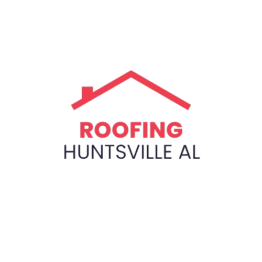When it comes to protecting your home or commercial building, the roofing system is one of the most critical components. A well-chosen roof not only provides shelter but also enhances the building’s aesthetic appeal and energy efficiency. With various options available, selecting the right roofing system can be overwhelming. In this guide, we’ll explore 5 types of roofing systems, detailing their features, benefits, and ideal applications to help you make an informed decision.
5 types of roofing system are as follow:
1. Asphalt Shingle Roofing
Overview
Asphalt shingle roofing is one of the most popular roofing systems in residential construction. Known for its affordability, versatility, and ease of installation, it is a top choice for many homeowners.
Features
- Variety of Styles: Available in a wide range of colors and styles, asphalt shingles can mimic the appearance of more expensive materials like slate or wood.
- Durability: Modern asphalt shingles are designed to withstand harsh weather conditions, including high winds and heavy rain.
- Ease of Installation: Asphalt shingles are relatively easy to install, reducing labor costs and installation time.
Benefits
- Cost-Effective: Asphalt shingles are one of the most budget-friendly roofing options.
- Low Maintenance: Requires minimal maintenance, making it a hassle-free choice for homeowners.
- Energy Efficiency: Available with reflective coatings to enhance energy efficiency by reducing heat absorption.
Ideal Applications
- Residential Homes: Perfect for suburban homes, townhouses, and multi-family residences.
- Small Buildings: Suitable for garages, sheds, and other small structures.
2. Metal Roofing
Overview
Metal roofing has gained popularity for its longevity, energy efficiency, and modern appearance. It is available in various materials, including steel, aluminum, and copper.
Features
- Long Lifespan: Metal roofs can last 40-70 years, depending on the material.
- Lightweight: Easier to install and less strain on the building’s structure compared to heavier materials.
- Fire Resistant: Metal roofs are non-combustible, offering excellent fire resistance.
Benefits
- Durability: Resistant to cracking, shrinking, and eroding, metal roofs withstand extreme weather conditions.
- Energy Efficiency: Reflective properties help reduce cooling costs in the summer.
- Sustainability: Often made from recycled materials and fully recyclable at the end of their life.
Ideal Applications
- Residential and Commercial Buildings: Suitable for both due to their versatile design options.
- Industrial Buildings: Ideal for warehouses and factories due to their durability and low maintenance.
3. Tile Roofing
Overview
Tile roofing, made from materials such as clay, concrete, or slate, is known for its distinctive appearance and long-lasting performance. It is a traditional roofing system that has been used for centuries.
Features
- Aesthetic Appeal: Available in various shapes, colors, and sizes, offering a unique and attractive look.
- Durability: Tile roofs can last over 100 years with proper maintenance.
- Insulation Properties: Excellent thermal properties help regulate indoor temperatures.
Benefits
- Longevity: Tile roofs have an exceptionally long lifespan.
- Low Maintenance: Resistant to rot and insect damage.
- Fire Resistance: Tiles are non-combustible, providing superior fire protection.
Ideal Applications
- Mediterranean and Spanish-style Homes: Complements the architectural style perfectly.
- Luxury Residences: Adds a touch of elegance and sophistication.
4. Flat Roofing
Overview
Flat roofing is a common choice for commercial buildings but is also used in some residential applications. Materials commonly used include modified bitumen, EPDM (ethylene propylene diene terpolymer), and TPO (thermoplastic polyolefin).
Features
- Modern Look: Provides a sleek, modern appearance.
- Space Utilization: Can be used as additional outdoor space for terraces or gardens.
- Ease of Installation: Flat roofs are quicker and easier to install compared to sloped roofs.
Benefits
- Cost-Effective: Generally cheaper to install and maintain.
- Accessibility: Easier to inspect and repair due to the flat surface.
- Energy Efficiency: Reflective coatings can improve energy efficiency.
Ideal Applications
- Commercial Buildings: Ideal for offices, warehouses, and retail spaces.
- Modern Residential Homes: Fits well with contemporary architectural designs.
5. Green Roofing
Overview
Green roofing, also known as living roofs, involves planting vegetation over a waterproof membrane. This eco-friendly option offers numerous environmental benefits.
Features
- Vegetative Layer: Consists of soil, plants, and a waterproof membrane.
- Biodiversity: Supports plant and animal life, contributing to urban biodiversity.
- Stormwater Management: Absorbs rainwater, reducing runoff and mitigating flooding.
Benefits
- Energy Efficiency: Provides natural insulation, reducing heating and cooling costs.
- Environmental Impact: Improves air quality and reduces urban heat island effect.
- Aesthetic Value: Creates a visually appealing green space.
Ideal Applications
- Urban Buildings: Perfect for city environments where green space is limited.
- Eco-Friendly Projects: Suitable for buildings aiming for LEED certification or other green building standards.
Conclusion
Choosing the right roofing system is crucial for the longevity, efficiency, and appearance of your building. By understanding the unique features and benefits of these 5 types of roofing systems, you can make an informed decision that meets your specific needs and preferences. Whether you prioritize cost, durability, sustainability, or aesthetics, there is a roofing system that will perfectly match your requirements. Investing in the right roof not only enhances the value of your property but also provides peace of mind for years to come.
